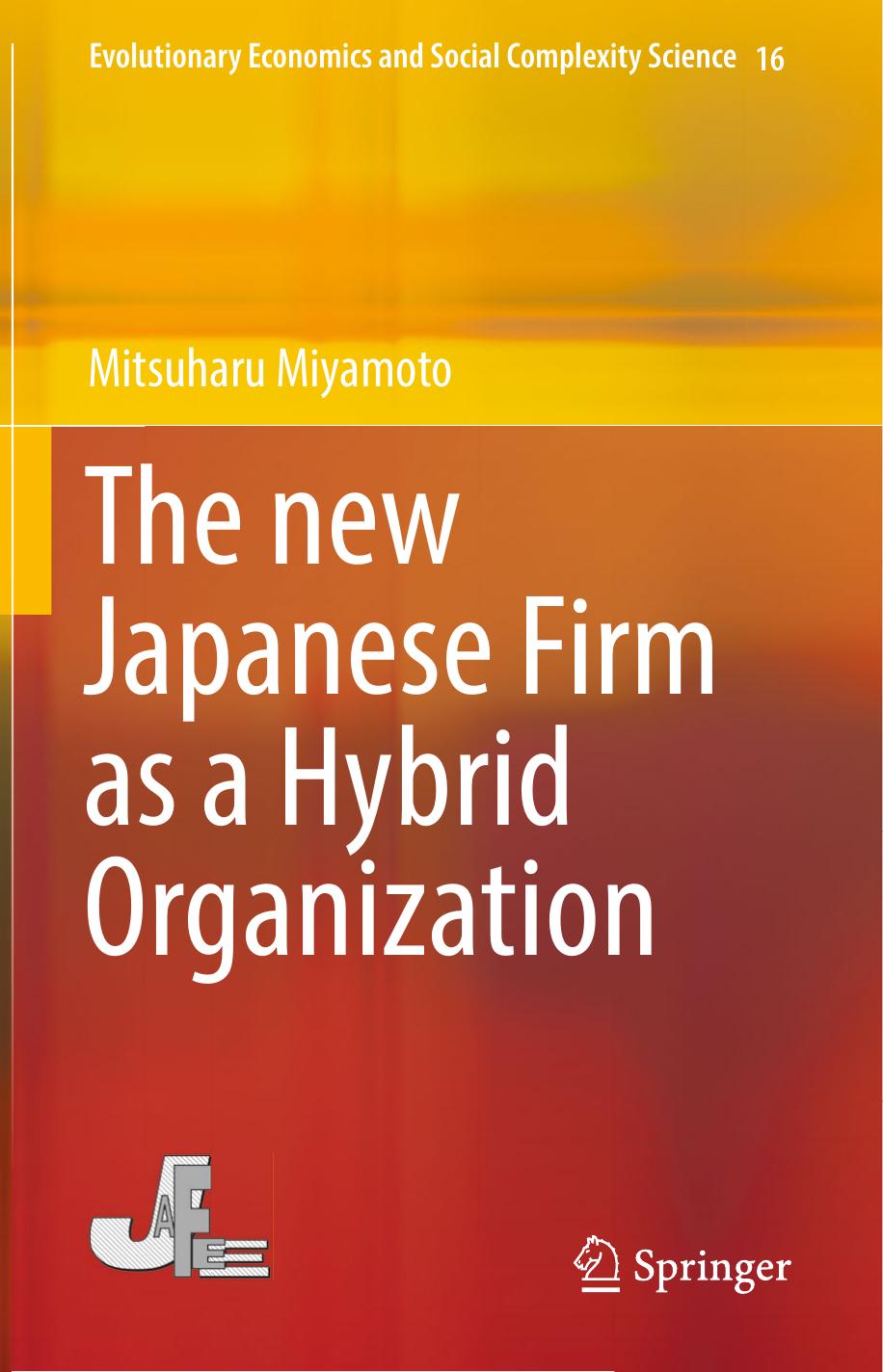The new Japanese Firm as a Hybrid Organization by Mitsuharu Miyamoto

Author:Mitsuharu Miyamoto
Language: eng
Format: epub, pdf
Publisher: Springer Singapore, Singapore
3.4 Concluding Discussion
We investigated how Japanese firms have changed under corporate governance reform by using two sets of survey data. First, we selected the three governance variables—shareholder orientation, board reform, and CSR orientation. Next, we estimated how the board reform was advanced by the effects of shareholder and CSR orientation, how the LTE practice was changed, and how the PRP practice was introduced by the effects of these three governance variables.
We finally estimated how the Japanese firms have diversified into four types of organizations in terms of the combination of LTE and PRP. In particular, two types of organizations were derived from the traditional Japanese firms: one is the new-J type, a combination of maintaining LTE and introducing PRP, derived from the combined effects of board reform and CSR orientation. The other is the A type, a combination of not maintaining LTE and introducing PRP, derived from the combined effects of board reform and shareholder orientation. The analysis beginning from board reform concludes with the diversification of Japanese firms.
Our findings give empirical support to the “gradual institutional change” proposed by Streeck and Thelen (2005) and Mahoney and Thelen (2010), as discussed in Chap. 1, arguing that actual change is incremental and cumulative contrary to the assertion of an overall institutional change and such changes proceed to generate gradual institutional change. In our model, while the shareholder orientation gets strengthened, as is evident in the increase in dividends, along with corporate governance reform, board reform is not an overall institutional change, such as an adoption of US-style governance structure, but an incremental change within the existing governance structure.
However, it is more of an incremental change, along the lines of the introduction of executive officer system. The objective of change is to rebuild the existing managerial organization and strengthen strategic management to restore performance. This produces a change in HR practices, such as the introduction of PRP and the restriction of LTE. As a result, the existing Japanese firms, traditional-J type firms, change to the A-type firms. On the other hand, continuity in the form of the LTE practice is preserved by the CSR orientation. This produces another change along with board reform. It shifts the traditional-J type firms to the new-J type.
In this way, Japanese firms changed gradually and diversified their organization in different directions. Beginning from board reform, we confirmed the gradual and evolutional change in Japanese firms, which is in contrast to the VoC theory that tends to stress continuity one-sidedly and persist in the path dependency of the existing institutional framework (Hall and Soskice 2001).
Our findings also provide empirical support to the “evolving diversity into hybridity” model presented by Aoki (2010). In Aoki’s model, corporation is conceptualized from the view of the relationships between shareholders, managers, and employees and what recognition is shaped with each other. Here the “traditional-J firm” is conceptualized to be institutionalized on the shared cognition between managers and employees, excluding shareholders. In contrast, the “traditional-A firm” has been institutionalized on the shared cognition between managers and shareholders, excluding employees.
Download
The new Japanese Firm as a Hybrid Organization by Mitsuharu Miyamoto.pdf
This site does not store any files on its server. We only index and link to content provided by other sites. Please contact the content providers to delete copyright contents if any and email us, we'll remove relevant links or contents immediately.
International Integration of the Brazilian Economy by Elias C. Grivoyannis(76598)
The Radium Girls by Kate Moore(11652)
Turbulence by E. J. Noyes(7733)
Nudge - Improving Decisions about Health, Wealth, and Happiness by Thaler Sunstein(7273)
The Black Swan by Nassim Nicholas Taleb(6794)
Rich Dad Poor Dad by Robert T. Kiyosaki(6206)
Pioneering Portfolio Management by David F. Swensen(6093)
Man-made Catastrophes and Risk Information Concealment by Dmitry Chernov & Didier Sornette(5687)
Zero to One by Peter Thiel(5517)
Secrecy World by Jake Bernstein(4420)
Millionaire: The Philanderer, Gambler, and Duelist Who Invented Modern Finance by Janet Gleeson(4128)
The Age of Surveillance Capitalism by Shoshana Zuboff(4007)
Skin in the Game by Nassim Nicholas Taleb(3993)
The Money Culture by Michael Lewis(3873)
Bullshit Jobs by David Graeber(3860)
Skin in the Game: Hidden Asymmetries in Daily Life by Nassim Nicholas Taleb(3744)
The Dhandho Investor by Mohnish Pabrai(3581)
The Wisdom of Finance by Mihir Desai(3543)
Blockchain Basics by Daniel Drescher(3347)
